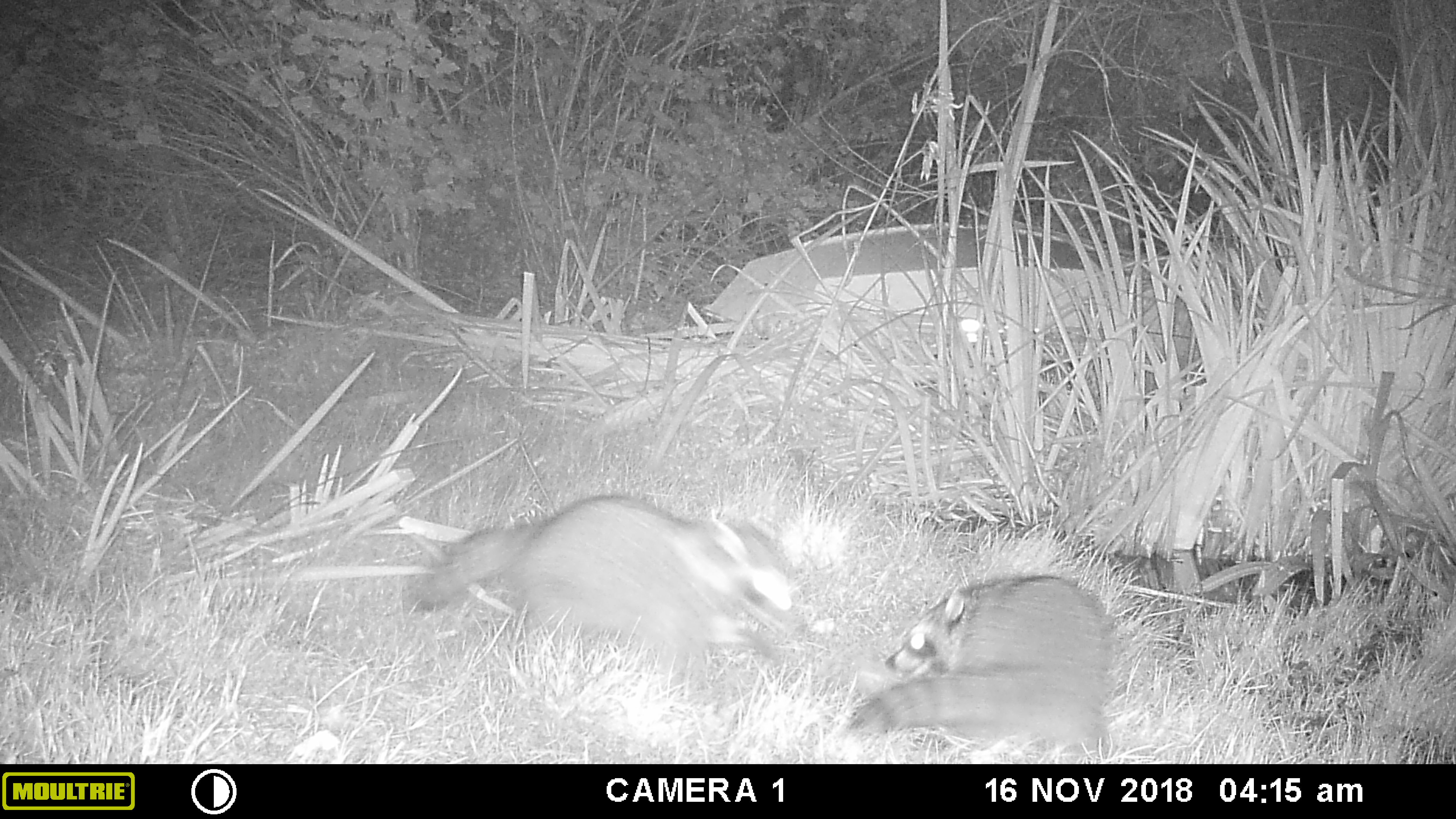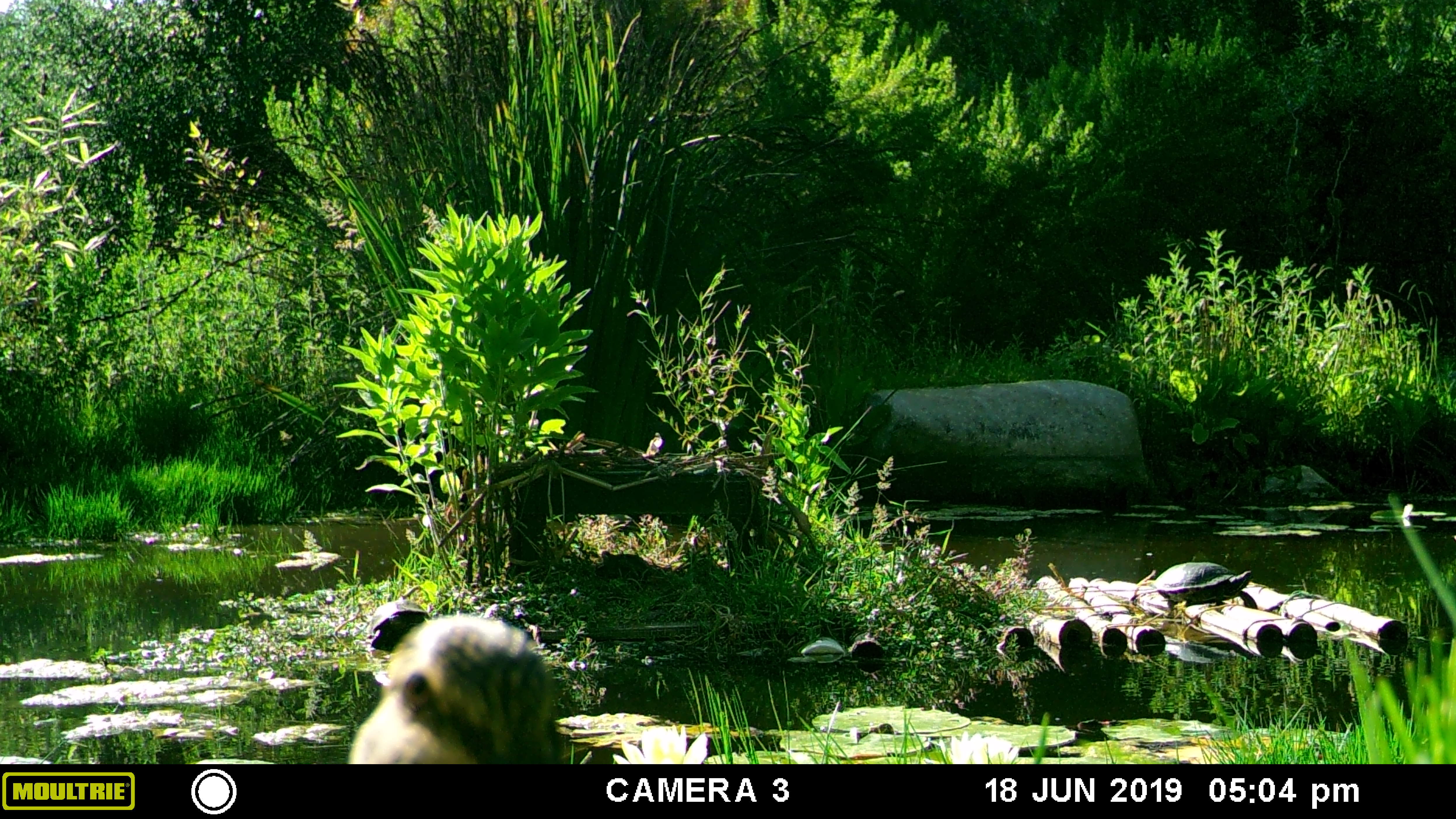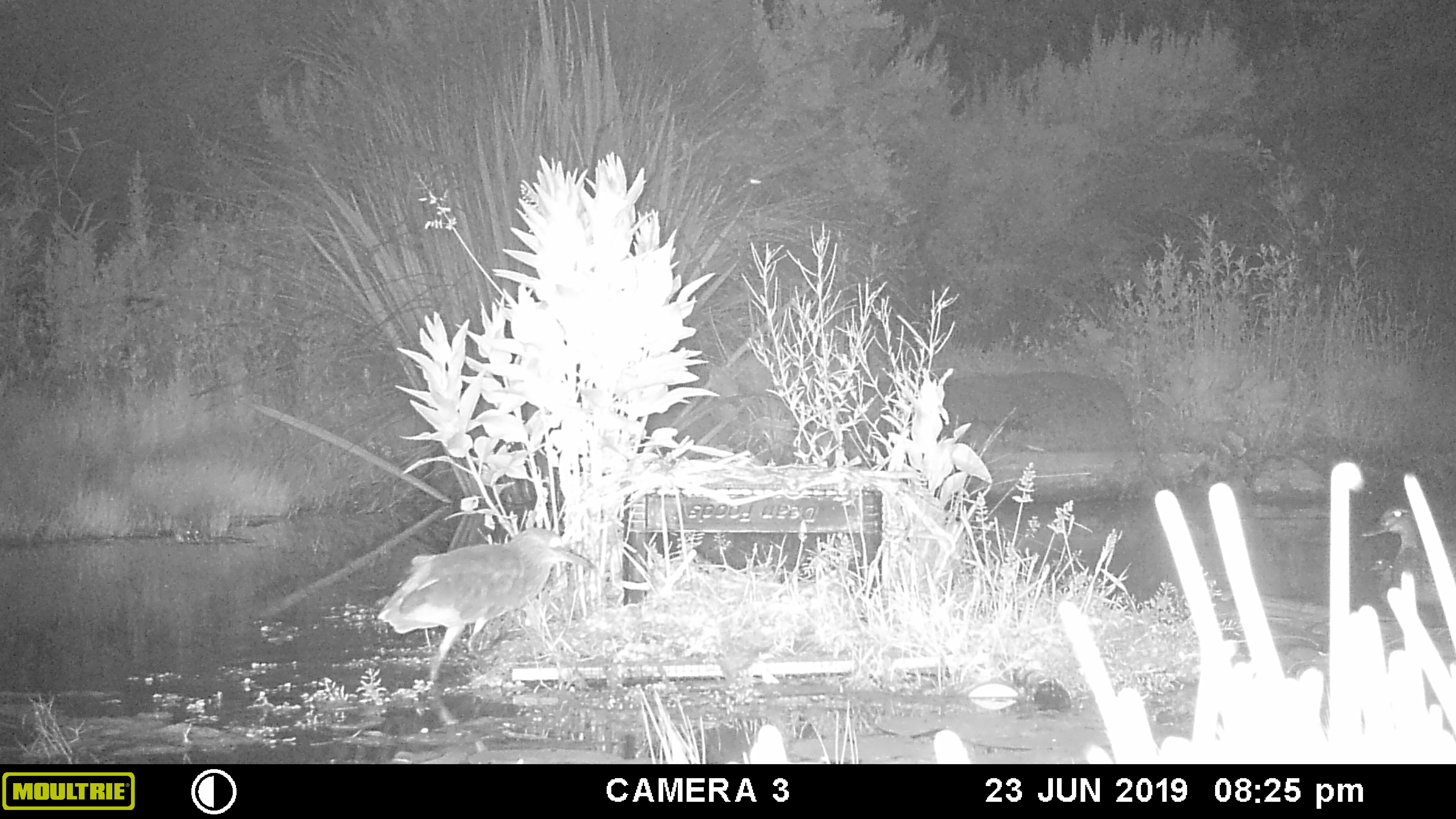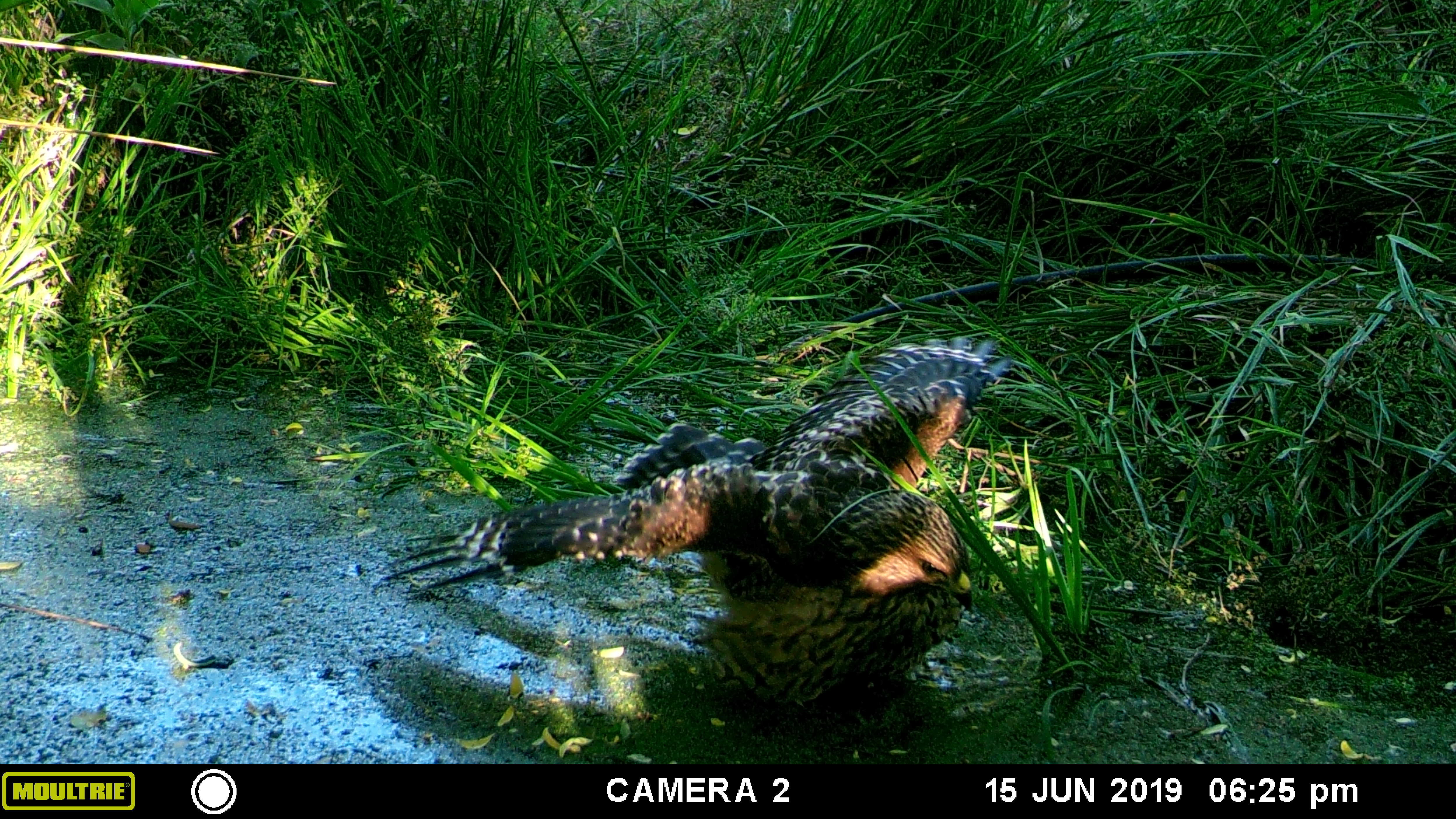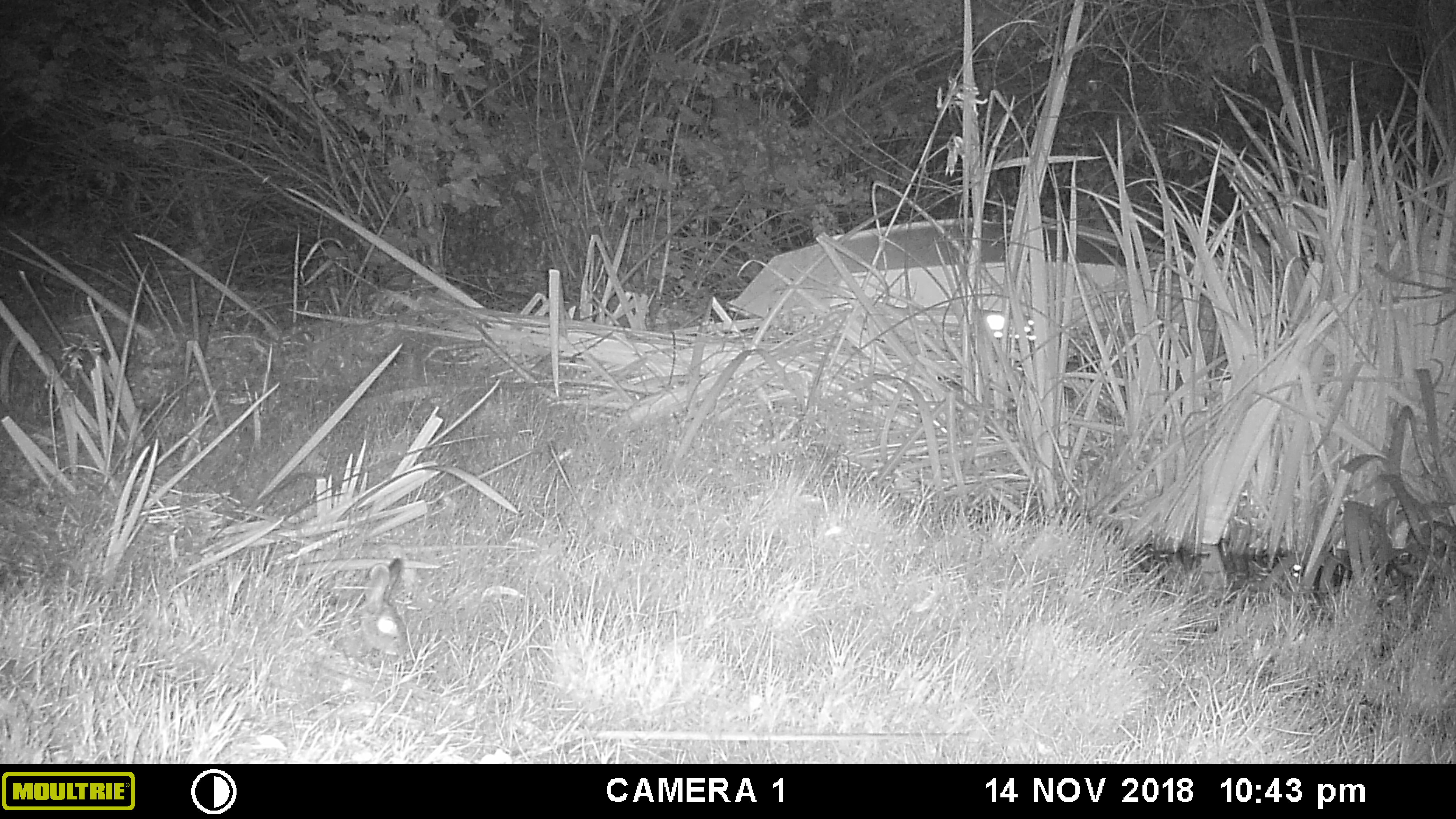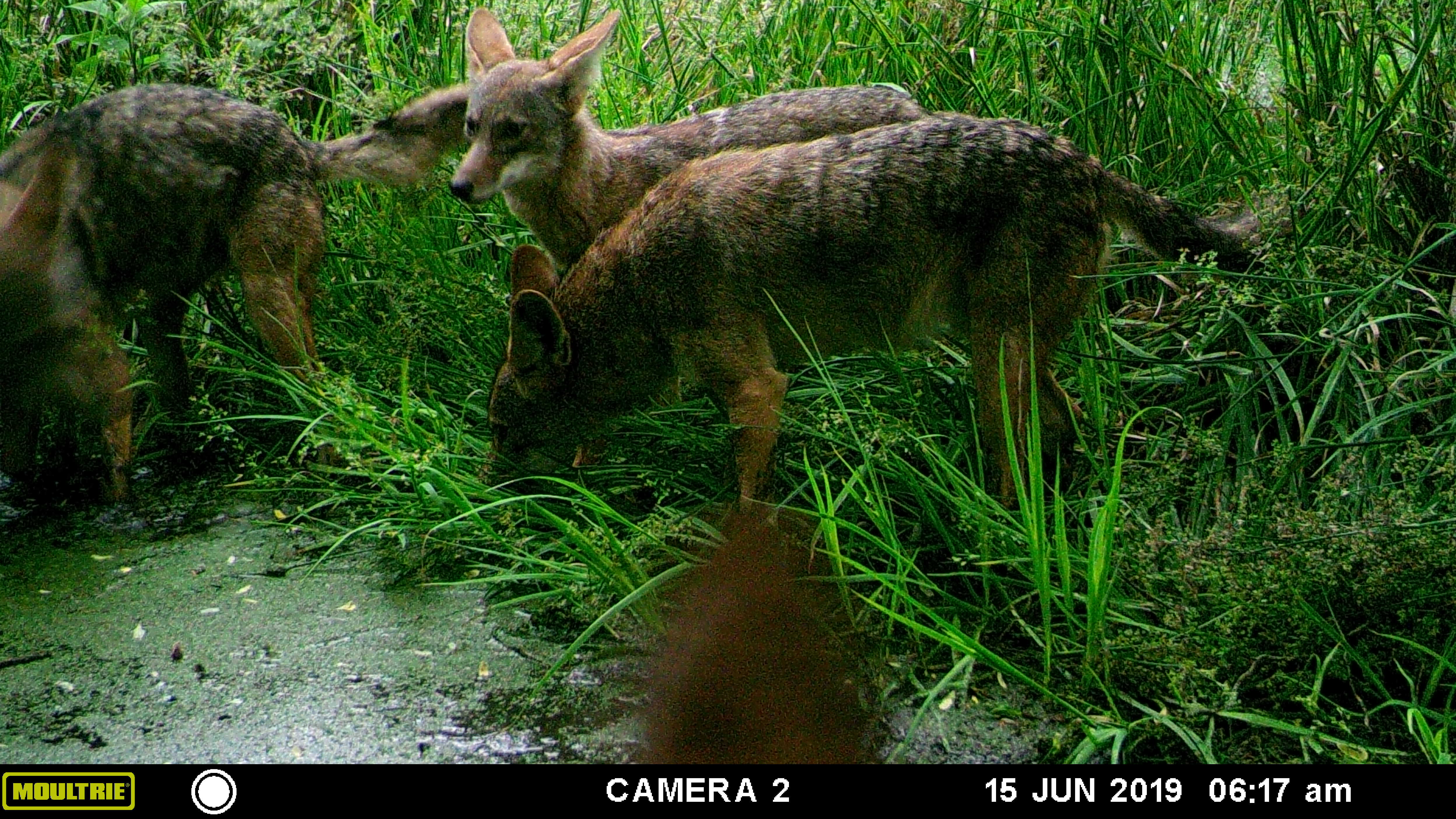- Animals, Birding, Gardening adventures, Integrated Pest Management, Natives, Planting, Quail, Water Saving
Native Plant List for Birds
Photo by Miranda Kennedy
Today Miranda and I (mostly Miranda!) spoke about native San Diego plants that were best for birds. Miranda’s excellent bird photography and her in depth knowledge of wildlife behavior made our talk for the Audubon San Diego Bird Conference very informative. She is always fun to speak with, too. We presented a slide at the end that listed plants that were featured in the presentation and I promised to post it here. By no means is this an exhaustive list; birds will take advantage of any resources they can to survive. However these plants can be purchased and planted in landscapes (we notably left off the poison oak in the above photo, which is a excellent food and habitat plant, especially for towhees who prefer to nest in it!). And here it is:
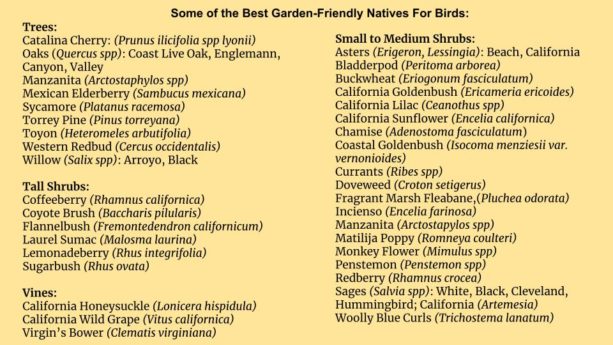
-
All the leaves are brown — and the foxes are grey
Through the fall so far, the wildlife cameras have continued to offer an enchanting insight into the usually unscrutinized, quiet shiftings of our habitat.
We’re obviously looking for animal activity on the cameras, but sometimes late or wind-blown-plant triggers capture some beautiful moments from the little ecosystems the cameras overlook.Daily, nightly, a lot of the same animals appear over and over, filling up the SD cards with hundreds of iterations of the same pieces, in snapshots or 15-second installments, of the same stories. This can be challenging to process, but we love the way we’ve come to know the patterns of some of our wildlife’s lives, and even know individuals.

This is the pond bunny. Pond Bunny hangs out in the bottom left corner there, popping in and out of the mule-fat, in and out of the screen. Pond Bunny helped me with rebuilding the little bridge by the withy hide. We love this opportunity to learn about and appreciate each little story: the summer evenings where spidery crane flies fill the creek’s small barranca well with their dramatic bumbling — skittering, over-exposed, in the capture of the infrared lights;
the black phoebe caught, again and again, in Muybridge frozen energy, in aerial sallies on winged insects attracted to the big pond in the afternoon warmth;

the long, still moments as an animal just stands, and looks, pulls in the air and lets its carried scents and noises sink in.
And, of course, we do still covet the unusual — even, playfully, the impossible: as any kid knows, dreaming (im)possibilities is half the fun of any endeavor (“Iron-flanked and bellowing he-hippos clanked and battered through the scudding snow towards us as we passed Mr. Daniel’s house.”). What could come here? I want rare birds to thoughtfully pose, in focus, on the cameras — and also to see a weasel. Maybe lots of weasels. And a scissor-tailed flycatcher would be great. Mom wants hedgehogs and foxes. Reasonable, right?
Well, turns out the foxes are pretty reasonable!
Who knows whether foxes have come through the property before. Who knows if one ever will again — or if it will pass through in a place and fashion that allows our cameras to record it. Tantalizing and wonderful!
(And my weasel dream looks brighter than ever!)
______________________________________________________________________________
Quotation from A Child’s Christmas in Wales by Dylan Thomas -
Owl in Good Time
Delightfully, the streambed wildlife camera has also been picking up an adorable owl visitor these last couple of months. Western Screech Owls (Megascops kennicottii) are certainly present in the area, but much less common to see than Barns and Great Horneds — they’re more reclusive than those much larger species, hunting mostly different prey and small enough to be at risk from larger raptors themselves. The ones on our property have made themselves known by the distinctive “po-po”, ping-pong-ball-bouncing call that only ever rises up from the tangle of trees in the streambed. We’ve only seen one in person on the property once, when a tour stop under the Big Oak above the stream woke it from its chance nap inside the disheveled old owl box dangling from a branch.
But we seem to have at least one — apparently very dirty — screech owl hanging around this summer, taking baths at the camera point at least a couple times a week. And it’s just the cutest darn thing.
“I meant to do that.” A very imperfect ablutioner. Here in lower elevation areas of Southern California, screeches stick near waterways because those habitats are where we have large trees; as cavity nesters that have adapted to have cryptic coloration and patterning that allows them to blend in with bark, large trees are essential. Happily, we have some big trees extant and growing in our little slot of land. And we have a number of conservation organizations locally who are working to preserve wild land and especially land connected to waterways, as these are always areas of higher species density and diversity. And they say that Western Screech Owls readily use owl boxes made to their dimensions. Wish list!
Bath interrupted by a sphinx moth. Crane flies also make cameos. -
August at Finch Frolic

Black Beauty zucchini. This year Finch Frolic has been particularly beautiful. Of course, this year we had to close down throughout the spring. Fortunately we’ve been able to reopen for limited-capacity tours with safeties in place. However, I really miss sharing how lovely the garden is, and I want to let you have a little tour right in your home.

Little Marvel Popcorn. It tastes so good! These photos were taken this morning before the temperature rose; its in the 90’sF here today, in North San Diego County. I apologize for the phone camera, as my good camera is in for repair. I only wish that you could also smell the moist mulch from the light overnight dew, or hear the clug-clug of the crow, the tittering of a flock of bushtits and the scuttling of lizards through leaves, which I experienced as I walked around the garden. All of these friends and so many hundreds more are working the garden today and every day, keeping it in balance.

A blue dasher dragonfly, one of many species that patrol for insects all over our property. Their larvae in our ponds look like little dragons, and they eat mosquito larvae as well. Watercress behind. Our food forest is a low-water-use garden, on poor soil, using no additives to the ground other than occasional compost. There are no herbicides, pesticides or other factory-made chemicals used here, and there are two of us who care for the garden. Most of the seasonal beauty this year is due to the diligence of my daughter Miranda who took seed sprouting to a whole new level even before the pandemic arrived. We rely heavily on the insects, birds, lizards, frogs, soil and water microbes and creatures to do all the work protecting the plants, and the plants themselves to create good soil. All we add is a low dose of salty well water which the humus cleans, and leaves or sheet mulch on top. Our fruit trees receive a dose of blender compost once in awhile. Miranda and I hope that these photos bring you peace and lift your spirits, and that knowing you are looking at a safe habitat that is thriving with life gives you a feeling of security as well. It can be done. Permaculture must be done. Best of health! Diane

From the driveway looking down the main pathway into the garden. 
Lorenziana Gaillardia, to feed the pollinators. 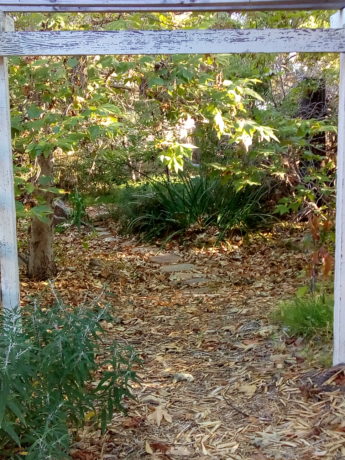
Rock steps cross the large rain catchment basin. Sycamore leaves protect the soil from the heat. 
Our new orchard, with beans trained up a teepee over a fruit tree, and tomato cages behind. 
Our old Ca. Live Oak. Oaks are home to over 300 species of bird and insect. 
Our jasmine-covered gate in the sun. 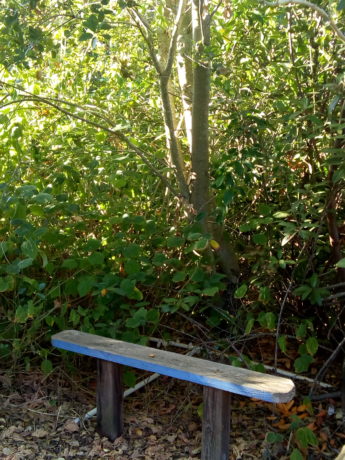
Resting place, made from recycled wood. 
Figs! Panache Striped Tiger. 
Dawn through the birch trees, with Naked Lady amaryllis blooming behind the blackberries. 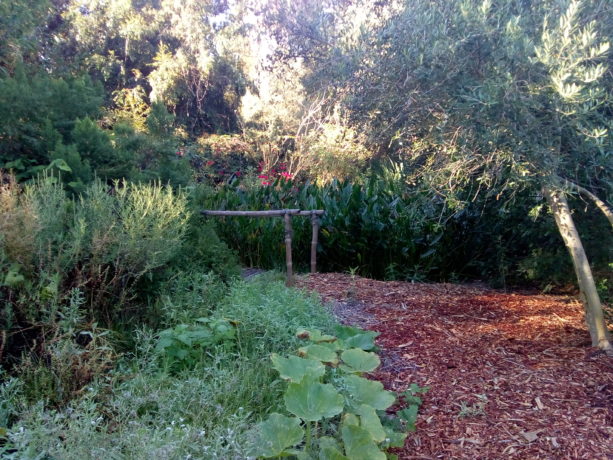
Our small bamboo bridge next to our little pond. 
Dawn through an olive tree. 
A native mallow wildly blooming over a bamboo footbridge Miranda just built. 
Black Krim. 
A plant guild combines plants with different functions for the benefit of all. 
The Torch Tithonia is over 5′ tall, and butterflies and birds love it. A plum, squash and orange tree in the foreground. 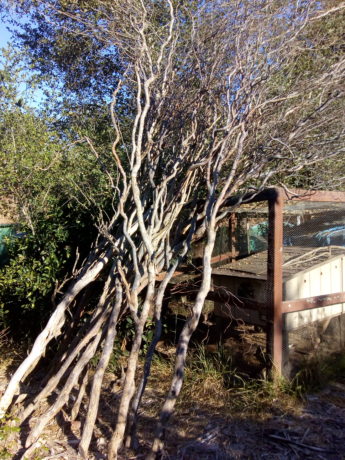
We pollarded our willow trellis in January, and these tall interesting limbs are waiting for some creative project to arise. 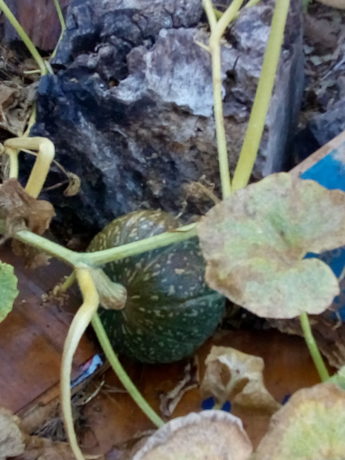
Kabocha squash. 
An army worm taking a sleep in a mallow flower. 
We grow the timber bamboo, and eat it, too! 
This beauty is a carrot, Lunar White, allowed to go to seed. Gorgeous and great food for our tiny native insects. 
Lorenziana Gaillardia. 
Straw flower and carrot. 
Apples do very well in hot weather. Cripps Two. 
Red Kuri squash vine past the seating. 
A whole mess of Naked Ladies! 
Tall Double Mix strawflowers, (Helichrysum bracteatum). 
The Withy Hide, or willow hut. 
Hard to believe that these massive trees grew so quickly. It has everything to do with water capture in the soil. 
This stump has personality! Brachychiton rupestris, Australian Bottle Tree. 
The leaf cover makes this rain catchment basin look full. 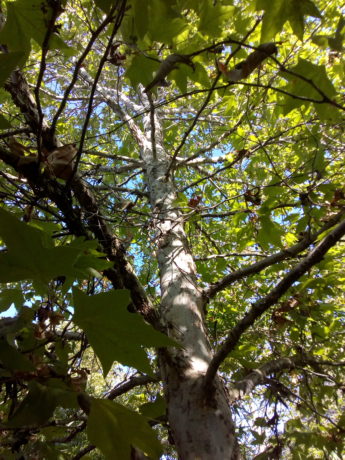
California sycamore, 8 years old. 
A covered bridge over the rain catchment system. 
-
The Battle of the Bulge
 POND FROLICS
POND FROLICS

In the still of the night….
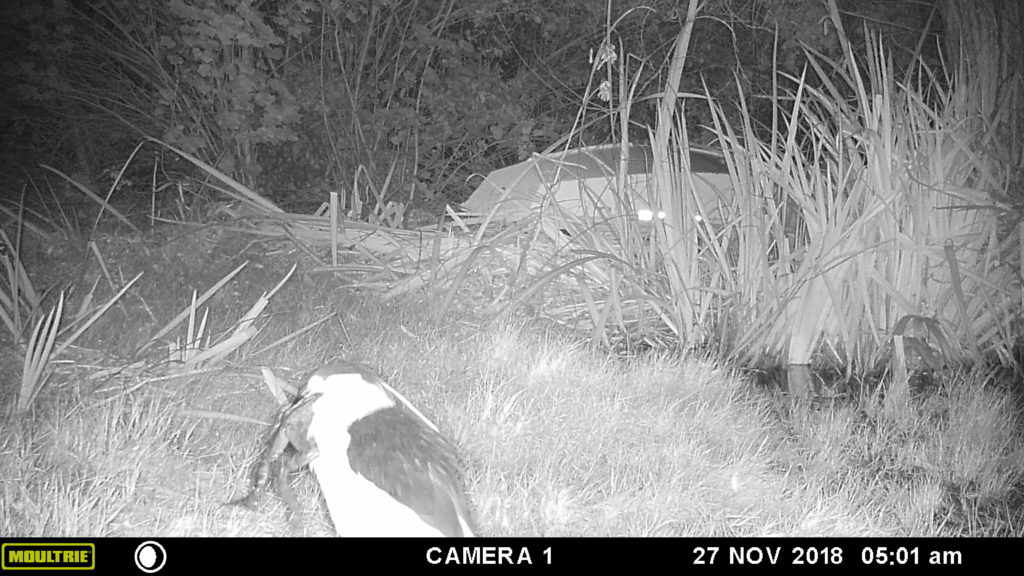
“AHAAAAAH! ‘INGO! Om wi’ EE, ithter ‘ummy!” 
“…Iddle ard oo ‘thallow…” 
“Utht ‘otta adust.” 
“Abee oer ere….” [Five minutes later…]

“Oou know, imma juuuust –“ 

“You know, I really feel like worms, anyway. Yeah. Alright. Let’s go get some worms! Yeah.” -
Owl Be There
 POND FROLICS
POND FROLICS
That nocturnal birds eat at night is a pretty straightforward piece of knowledge — awake at night, ergo eating at night.

It’s also pretty clear to anyone who finds a large dropping on their car in the morning that wasn’t there the evening before that other functions of life have to happen in the hours in which we sleep or stumble into things as well.

It’s funny how surprising it was to me to be confronted with the fact that owls — as of course they must do — also bathe at night.



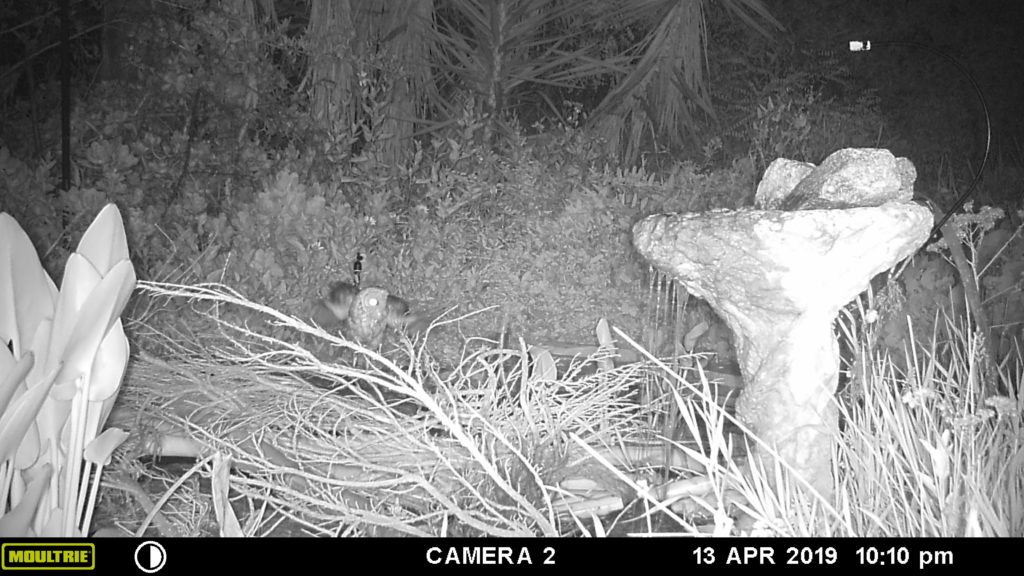
Need to install an owl-dryer out there!
-
The Púkas of Caerbannog
 POND FROLICS
POND FROLICS
Finch Frolic is home to many Desert Cottontails.

Dah-DUM. Dah-DUM. Dah-DUM, dah-DUM, DAH-DUM –! More all the time, in fact.

“Whoa! Do you see what I see?” “Yeah, yeah — when did that rabbit get there?” Or at least very solid population replacement.
We see them all the time because they are pretty comfy here and used to us, just scooting around nibbling grasses and fighting the ducks (I gotta see if I have photos of that to share — hilarious bunny sass…).
The funny thing is how infrequently they appear on the wildlife cameras, and when they do, they’re invariably being rather sneaky.
“Oops, still in shot, sorry.” 


Sometimes, it can start to feel a little spooky….
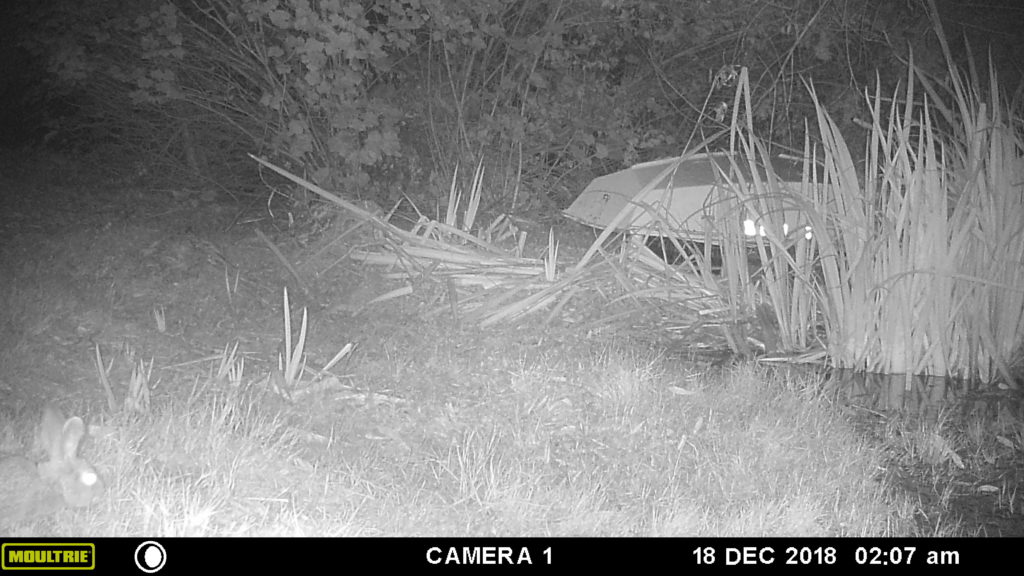
(Nasty, big, pointy teeth.) 
— Run awaaaay!
-
Getting Your Feet Wet
 POND FROLICS
POND FROLICS

“Oooo that is definitely squlechier than I expected–!” Either this juvie Red-shouldered Hawk (Buteo lineatus) thinks she just caught something or she’s just realizing bathwater with duckweed might not be the best choice….



Subduing an unfortunate young bullfrog? Carefully scraping off tiny, free-floating aquatic plants? Blocking out a new rhythmic gymnastics routine? We’ll never know.
-
From Heron Out
 POND FROLICS
POND FROLICS
Lessee, what can I tell you about the Black-crowned Night-Heron (Nycticorax nycticorax)….
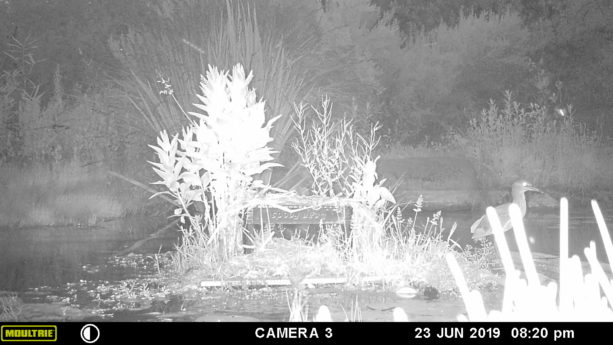
“WHOA, what was that back there? Gotta check that out….” There’re small herons. They have blackish feathers on top of their heads. I guess you could call it a cap. A blackish cap.

“They were fast – as – light – niii-ing–!” They’re the most widespread species of heron in the world, apparently. Noisy, social, not too fussy.
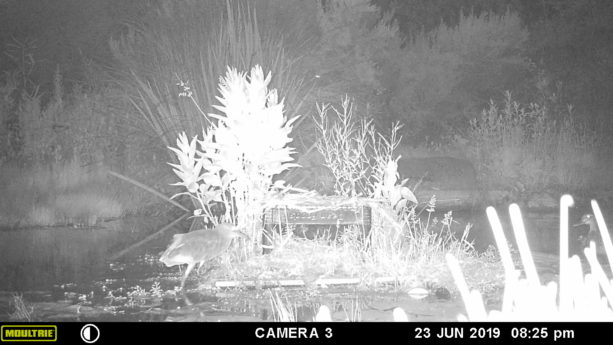
“Hey! What’re you lookin’ at, lady?” Oh, and this is surprising: they do most of their hunting and such at night or in the dusk: evening and early morning. Herons of dimness. Darkling herons. Gloaming. Blackish-capped. Herons.
…Yep. -
Always Time to be Grateful
Today, on Thanksgiving Day, Nov. 22, 2018, as on every other day there is so much to be thankful for. For waking up, for food, clean water and shelter, for friends and family, for the opportunities to volunteer and the ability to do so. this year at age 57 I returned to school, taking Horticulture classes at a local junior college to update my skills and knowledge. I overdid it with four classes, so my time management skills have been as severely tested as my ability to memorize and learn new concepts. Without my daughter’s help it would be less successful.
Finch Frolic Garden continues on and as we close the garden to the public for the winter, it remains open and thriving for wildlife seeking clean water, shelter and food as well. For my birthday, Miranda bought me a game camera which has recorded some interesting life in the bog area of the pond. Now we know why the irises are always smashed. The two glowing orbs from under the boat are just reflections, not a monster, but the ones from the pond are invasive bullfrogs. The juvenile red shouldered hawk has been walking around in the bog several times. Pond life is full of surprises!

MOULTRIE DIGITAL GAME CAMERA 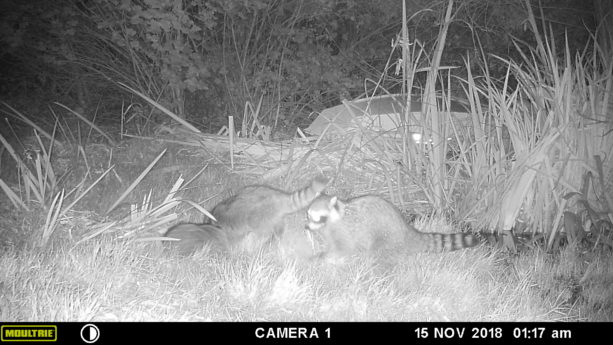
MOULTRIE DIGITAL GAME CAMERA 
MOULTRIE DIGITAL GAME CAMERA 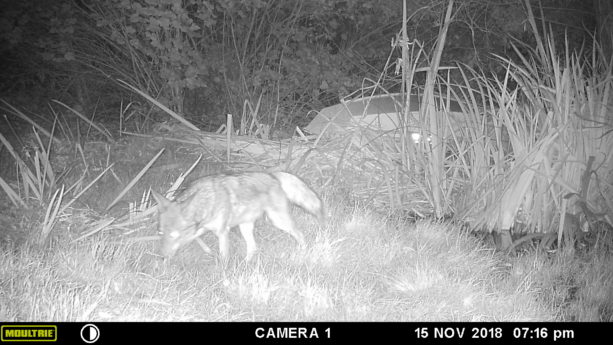
MOULTRIE DIGITAL GAME CAMERA 
MOULTRIE DIGITAL GAME CAMERA 
MOULTRIE DIGITAL GAME CAMERA We didn’t burn this go round with wildfires. We are maintaining, and therefore are so grateful for everything that we have, even the troubles that we have as they are not as severe as so many other’s. I am especially grateful to have a permaculture habitat so that these animals can survive.
Have a wonderful Thanksgiving everyday.
https://youtu.be/xcStEV4QiUE

